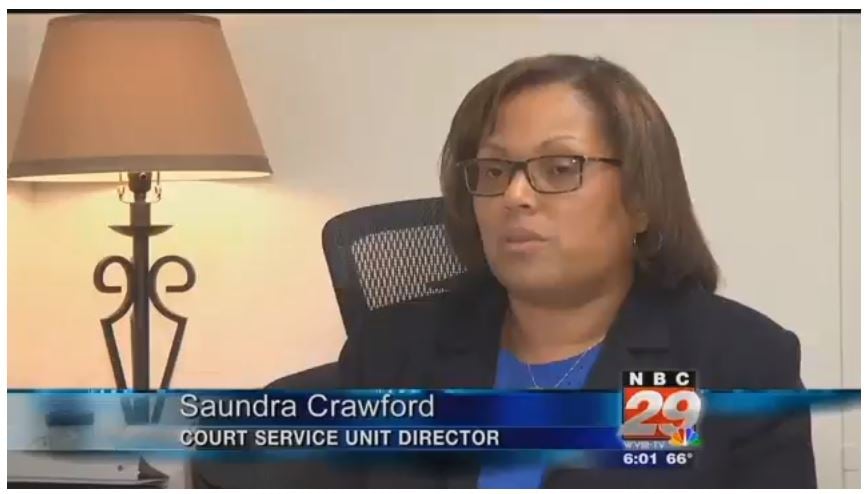Rethinking Juvenile Justice Reform
From the dawn of the American judicial system to our vast network of courts today, legal minds have always considered youth and adults very differently. Juveniles were thought mentally unfit to be tried for a crime at all, and the founders of the juvenile court in the late 19th century decided that they must be used to rehabilitate, rather than incarcerate, young offenders. Today that philosophy is still the bedrock of the juvenile justice system, a checkerboard of courts and offices that integrate far more resources than their founders could have imagined. But the juvenile justice system is often criticized for failing vulnerable children, particularly those with mental illnesses, children of color and youth from economically stressed households. Some reforms gaining momentum are reentry programs after out-of-home placement, restrictions on the volume of crimes punishable by incarceration, and greater emphasis on education and test-taking in detention centers. Though reformers disagree on which programs are most necessary, most agree that constant rethinking of the system is needed to create an equitable structure of justice for youth.
The School-to-Prison Pipeline

The school-to-prison pipeline, often decried by reformers of the juvenile justice system, refers to the relatively new phenomenon of police officers in educational spaces. School Resource Officers, or SROs, are members of local law enforcement assigned to work in a particular school— their job is to protect students from danger, from inside or outside the school building. Reformers and researchers postulate that the presence of armed law enforcement officials can increase the likelihood of students’ arrests at school, causing needlessly high rates of entrance into the juvenile justice system. The pipeline is created by zero-tolerance policies: with SROs able to arrest students in school, more and more minor infractions are turned over to law enforcement rather than to administrators and teachers.
Since their inception, the number of School Resource Officers has skyrocketed— in 2018, over 42% of American public schools employed at least one SRO1 This increase is due in large part to the prevalence of school shootings, though SROs are tasked with much more than preventing violence at school. Resource Officers are often asked to participate in student misconduct meetings, intervene in physical or verbal fights and sometimes mete out punishment themselves. Because of these many functions, some critics argue that regular SRO presence can cause higher levels of in-school arrests.
Research is mixed on SRO effectiveness at preventing danger to students; however, a recent study from the University of Florida demonstrates that an officer’s presence at school does increase the odds of student referral to law enforcement, both for major and minor offenses. These researchers show that SROs often become involved in small disputes—across the country, students have been arrested for talking back to a teacher, mistakenly bringing a knife from a camping trip to school and yelling at another student. These offenses, once handled by administrators, are now more likely to lead to SRO referral, causing higher rates of arrest in schools. In North Carolina, the number of school-based referrals has increased by 10% in only five years; similarly, high increases are seen in other states, and a substantial amount of these referrals are comprised of low-level offenses.
Studies show that arrested students, particularly those who attend juvenile court and are found guilty, are more likely to have mental health problems, lack employment in the future and return to prison as adults. In fact, in a study of students who were incarcerated as a youth, high school graduation rates were 13% lower and future criminality was 23% higher than those who were not incarcerated.2 The school-to-prison pipeline is so problematic—and a focus of so many juvenile justice reformers—because high levels of juvenile incarceration can cause high levels of adult incarceration, future economic stress, and even health complications.
Juvenile Court
When a young person is arrested, they often attend juvenile court—these special courts for those under 18 are only for civil proceedings, so youth found guilty are charged with a “delinquent act” rather than a crime. Not all arrested juveniles enter the court, though— after a juvenile’s arrest, the District Attorney’s office files a petition. These petitions can be “status offenses”— crimes like running away or breaking curfew that only those under 18 can commit— or “delinquency cases”, like theft or drug abuse that are also crimes for adults. Often, juvenile cases are concluded during pretrial settlements; if not, the judge will decide whether the child’s case should be transferred to adult court. Most likely, the case will be kept in juvenile court—the judge then rules if the youth is guilty, and if they are, evaluates the best punishment for the young person.
Because the juvenile justice system has always strived to rehabilitate rather than merely punish, judges have a plethora of sentencing options unavailable in adult court. At the conclusion of a trial, a judge can simply issue a verbal reprimand; they can also order counseling for the juvenile and the juvenile’s caretakers or mandate a certain number of community service hours for the young person to complete. Because the majority of cases seen in juvenile court are theft, simple assault, curfew- or drug-related crimes, judges often use lighter sentencing to match these minor offenses.3 The most common order from a judge is probation—the restriction of a juvenile’s freedom of activity—and this can span anywhere from a few weeks to years, with regular checks from a probation officer.
Sometimes, judges will sentence youth to out-of-home placements —these vary greatly case-by-case and by the needs of the child. In the case of a dangerous or insufficient home environment, judges may require youth to move and live with relatives, in a foster home or a group home, though being taken from home can be a traumatic and often harmful event. If a young person is struggling with mental health issues, a judge may decide that an out-of-home mental health institution is the best place for them. In other cases, a probation camp away from home may be the sentence, albeit these camps often lack key rehabilitative elements and focus heavily on punishment rather than support. Judges can also choose to incarcerate youth in detention centers; this becomes more likely when the juvenile is a repeat offender. However, the most likely ruling remains probation, a sentence that comes with a host of regulations and often unseen consequences.
Juvenile Probation

Every year, judges issue more than half a million probation sentences to youth in the juvenile justice system.4 The most common sentence for young people who are found delinquent in court, the look of probation can vary greatly between states, jurisdictions and even individual cases. Though the basic structure of probation remains recognizable nationwide—a judge issues a list of rules that a young person must follow and assigns a probation officer to regularly check in on compliance—the requirements imposed on youth can differ based on the magnitude of the delinquency, the rules of the state and the discretion of judges. Probation can include the juvenile making payments to the victim or victims, completing community service hours or strictly complying with curfew hours. Sometimes, judges will order the revocation of a driver’s license, forbid contact between co-defendants or “inappropriate friends” and require officer permission for the youth to change employment or residence. Regardless of the specific regulations laid down by a judge, probation is a punishment meant to deter future criminality by stripping juvenile freedom for a time—looking closer at probation and other forms of deterrence, though, leads to questions about the efficacy of this system.
While probation is less disruptive than placing youth in out-of-home detention centers, the sentence, and all its regulations can push young people deeper in the juvenile justice system without offering support or incentives for positive behavior change. For many young people, probation can be confusing—with over thirty different rules in some jurisdictions, keeping track of probation conditions can be difficult. But an accidental violation of any regulation can lead to more punishment and more involvement in the juvenile justice system, even ending in eventual incarceration. Particularly for low-risk youth, probation can be dangerous—in a study of Ohio teenagers that scored as low-risk for recidivism, those placed on probation were 50% more likely than their peers to re-offend.
Recent child psychology research demonstrates that youth respond better to positive rewards for good behavior than to punishment for misbehaving; reformers often emphasize the use of diversion programs, like skill building, counseling and promoting positive growth, over probation as usual. Less invasive treatments than supervision and punishment can help youth think about their personal maturity, growth, and development rather than merely avoiding the consequences of probation. What’s more, diversion tactics—even including verbal reprimands as sentences rather than higher punishments— are a cost-effective alternative to probation, a system that costs taxpayers an estimated $2 billion per year. By investing in programs that focus on personal growth and positive behavioral changes— investments that have paid off in states like Connecticut, where recidivism rates among juveniles have dropped significantly—probation systems can become an effective rehabilitation program rather than rote punishment.
Youth Detention Centers
As in the adult justice system, the most severe punishment arrested juveniles can face is a transfer to an out-of-home facility. Nearly 53,000 American youth on any given day are held in these juvenile justice-related centers— the US has the highest rate of juvenile confinement of any developed country, though not all youth in out-of-home placements are held in detention centers.5 Juvenile justice facilities can be split into two separate categories: residential placements and correctional placements. Residential facilities tend to be less restrictive out-of-home placements, generally allowing youth to work or attend school while completing their sentence. These placements include long-term group homes, treatment centers that focus on providing a variety of medical services and even the less common boot camps or wilderness ranches. Conversely, correctional facilities are the most restrictive placements in the juvenile justice system, including long-term secure facilities that function much like adult prisons and detention centers, the focus of many reformers’ energies.
Juvenile detention centers share key similarities with adult jails—the facilities are run by local law enforcement and are meant to provide short-term restrictive care for juveniles with a pending court date or juveniles who have been found delinquent but are awaiting sentencing. On paper, detention centers aim to detain only youth who pose a threat to their communities, yet many non-violent, low-level juvenile offenders often end up confined in these centers as well. Over 5,000 youth in detention centers are low-level offenders, and many are detained merely for probation violations like breaking curfew or skipping school. In fact, only a third of youth in detention centers are accused of violent offenses, and 1 in 5 detained in these centers have yet to be found guilty by a judge.
Though juvenile detention centers are required to provide certain basic needs to all detained youth, like educational services and health assessments, placement in an out-of-home facility can be a traumatic event for a young person. Over half of all juvenile facilities house more than 51 youth, leading to overcrowding that can spark outbreaks of violence and instability as well as stretch educational resources thin. Detaining low-level offenders or youth who violated probation alongside those who have committed more serious offenses can cause higher recidivism among otherwise low-risk individuals, and research shows that juveniles who have been detained continue to struggle with psychological wellness and healthy social relationships even into adulthood.6 Reformers agree that juveniles need positive developmental incentives, healthy social relationships and a focus on mental health to avoid future arrest; with overcrowded detention centers offering slim resources to youth, out-of-home placements can quickly become a negative and even a dangerous experience for at-risk juveniles.
Alternatives to Incarceration

In light of new research pointing to the ineffectiveness and even danger of incarcerating juveniles, increasing numbers of state and local law enforcement offices are introducing new, community-based programs as alternatives to detention. Many
One of these evidence-based, in-home alternatives to detention is Multisystemic Therapy (MST), a juvenile intervention that keeps youth with their families while engaging schools, friends and communities in the treatment process. MST focuses on positive, prosocial development rather than punishment, providing a host of treatment services for both the family and the juvenile. Tailored to the individual needs of the youth, MST offers substance abuse therapy for both youth and caretakers, marital therapy, financial management planning, educational support and a suite of other treatments to engage all aspects of a juvenile’s life. At the close of treatment, 91% of MST youth live at home rather than in detention centers or other out-of-home care—86% of youth are in school or working, and 87% have not been rearrested. By providing comprehensive, individualized treatment within a young person’s home, MST’s research-based model avoids ineffective rote punishment and focuses on helping youth develop healthy relationships and important life skills. With a new era of focus on positive juvenile growth and development, alternatives to incarceration like Multisystemic Therapy can be important and effective diversion treatments for at-risk youth in the juvenile justice system.
A Juvenile's Right to Counsel
There are many reasons that a juvenile might waive their right to an attorney. Most often, a juvenile does so with the belief that it will speed up the process so that they can be released and go back home. What these juveniles do not realize, however, is that they are far more likely to return to the system after being involved with it just once. Juveniles who must attend their initial detention hearing without counsel are more likely to be sentenced to being held pending trial. Further research has shown that these juveniles are not only far more likely to be found guilty than juveniles that aren’t held, but they are also far more likely to be sentenced to serve time in a detention facility.
Funding Juvenile Justice Reform Programs
The MST approach to putting juvenile offenders on the right path has been shown to be extremely effective in terms of its success rate, decrease in crime and keeping down costs. The question becomes how can communities and organizations pay for MST programs? Here are four steps that should be considered:
-
Assess whether your community needs an MST program.
-
Determine what funding is available.
-
Set up sustainable funding that will be in place for years.
-
Focus on long-term strategies.

Juvenile Justice Reform Initiatives in the States
Gain helpful insights on how to implement MST by learning about other states’ paths to success. This guide will share the history of MST in five states, what makes MST strong in each state, and what lessons the states learned along the way. States included in the guide are:
- Ohio
- New Mexico
- Connecticut
- Louisiana
- North Carolina
Video- Juvenile Justice Department Implements MST

Click here to watch this video about how the Department of Juvenile Justice is implementing MST as a new family therapy in Charlottesville, Virginia. Probation officials are looking to MST to help reduce youth violence and recidivism.
Contact Us
Interested in starting an MST program in your area?
Fill out the form below and someone will contact you shortly.

